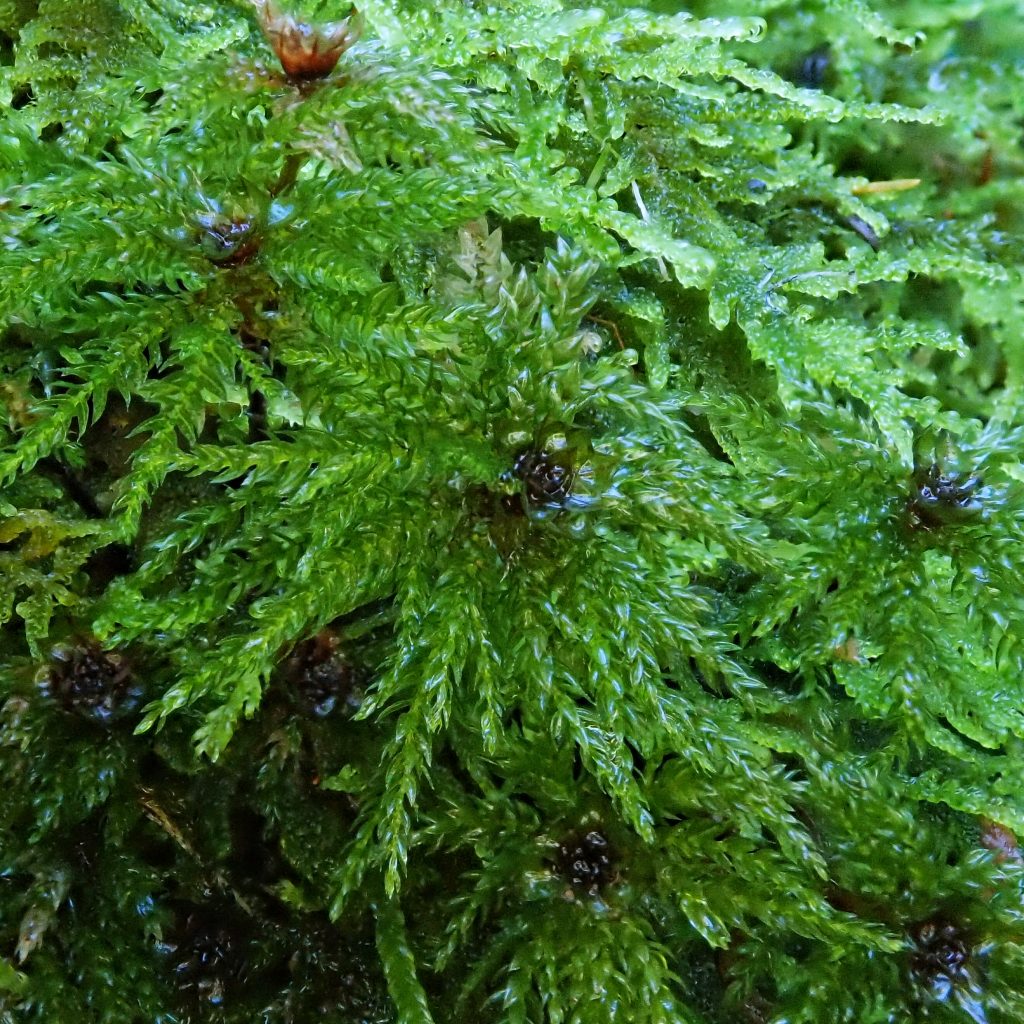
I was tempted to list palmtree moss as the common name for this, because that is what I mentally call it when I see it. But the name is not standardized, and it also gets called tree moss, Menzies’ tree moss, umbrella moss, Leucolepis umbrella moss, etc.
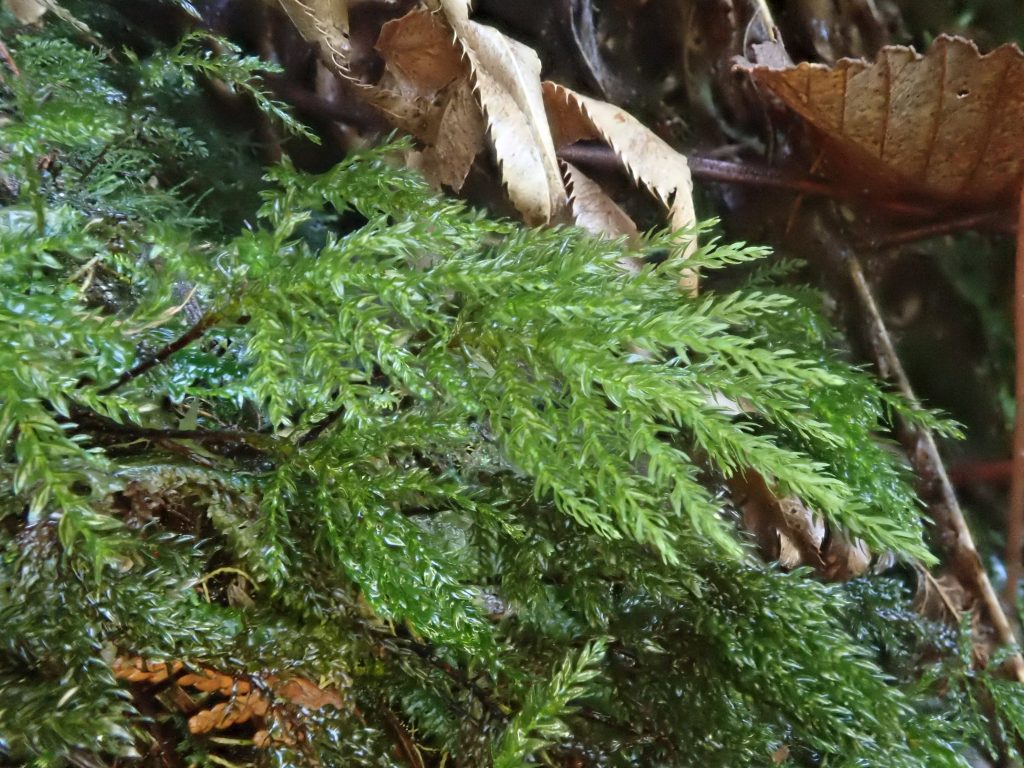
All of those common names refer to it looking treelike in shape (dendroid), with a bushy top and an apparently bare stem (more on this later). Because of this it is another of the very few mosses I can usually identify to species from a standing position.
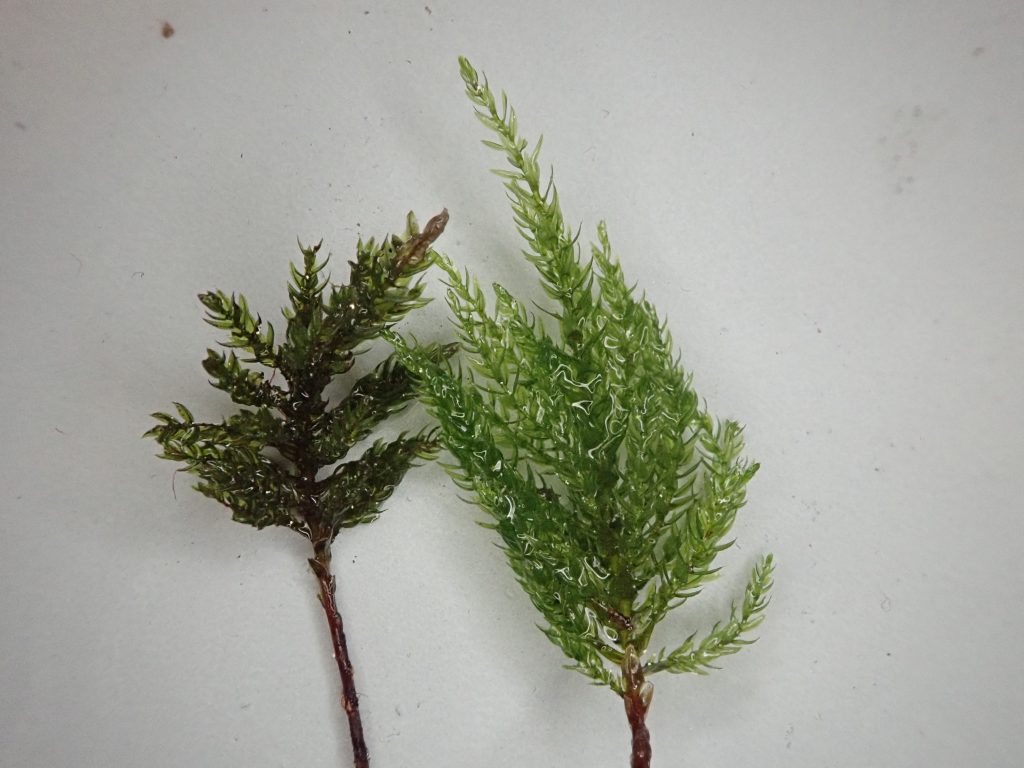
I had wondered if I would find this moss at The Cliff, since my experience with it has always been in association with forest floors. So it was a pleasant surprise when I found a patch of it on a ledge next door to the Dannorrisia bigelovii that I profiled a few days ago.
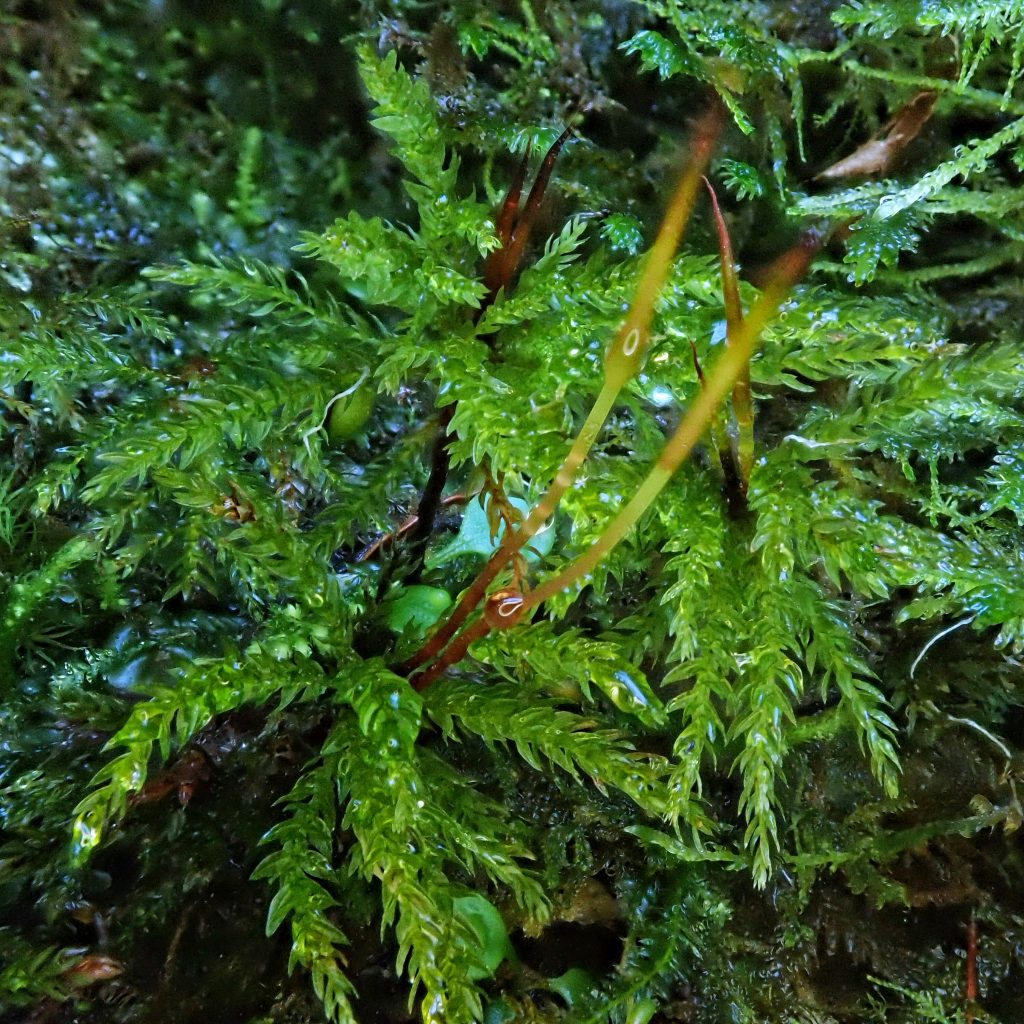
Description– Leucolepis is a monotypic genus that contains only this species; it is a fairly dark green acrocarpous moss, with drooping branches clustered near the top, and small, whitish leaves growing very tight to the stem below that cluster, giving it a silhouette similar to a top heavy, bent palm or oak tree; leaves toothed on margins, single long costa doesn’t reach the end; acutely pointed, serrate leaf apex; archegonia and antheridia conspicuous at the top of the plant.
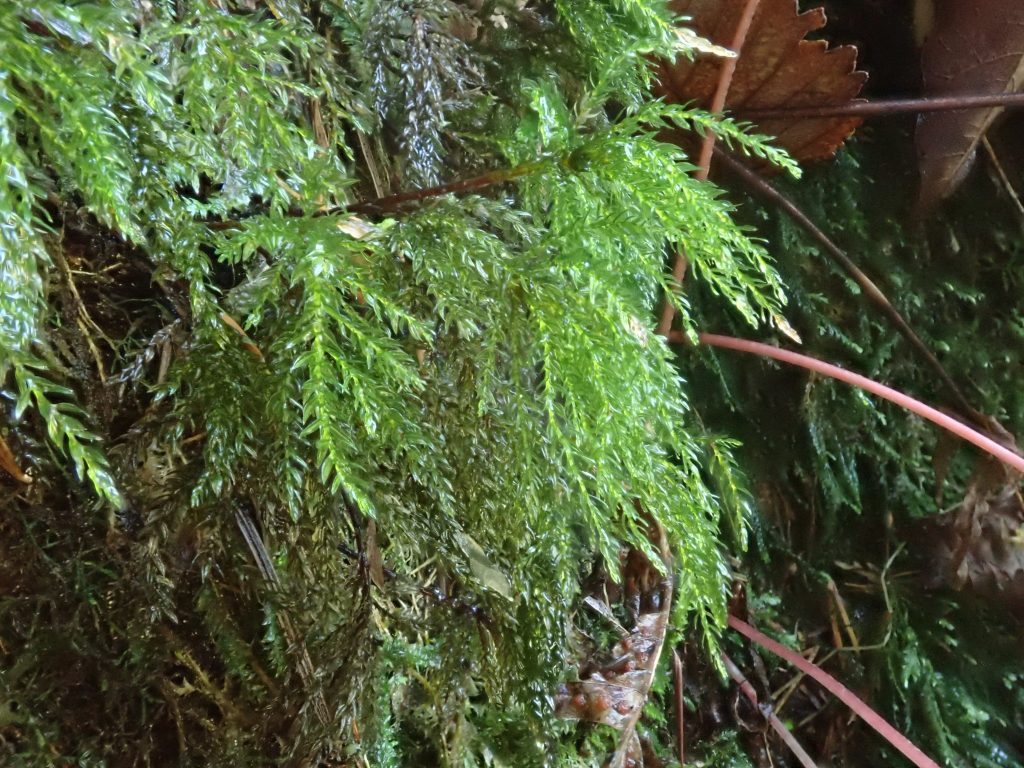
Similar species– Our other truly dendroid moss, Climacium dendroides, is found in wetter ground and bogs, often in standing water; it’s yellower green, more erect, and the leaf apex is shorter and blunter.
Habitat– Shaded areas at low to mid elevations, on soil, logs, tree trunks and rock.
Range– West side of the Cascades; Pacific Coast endemic
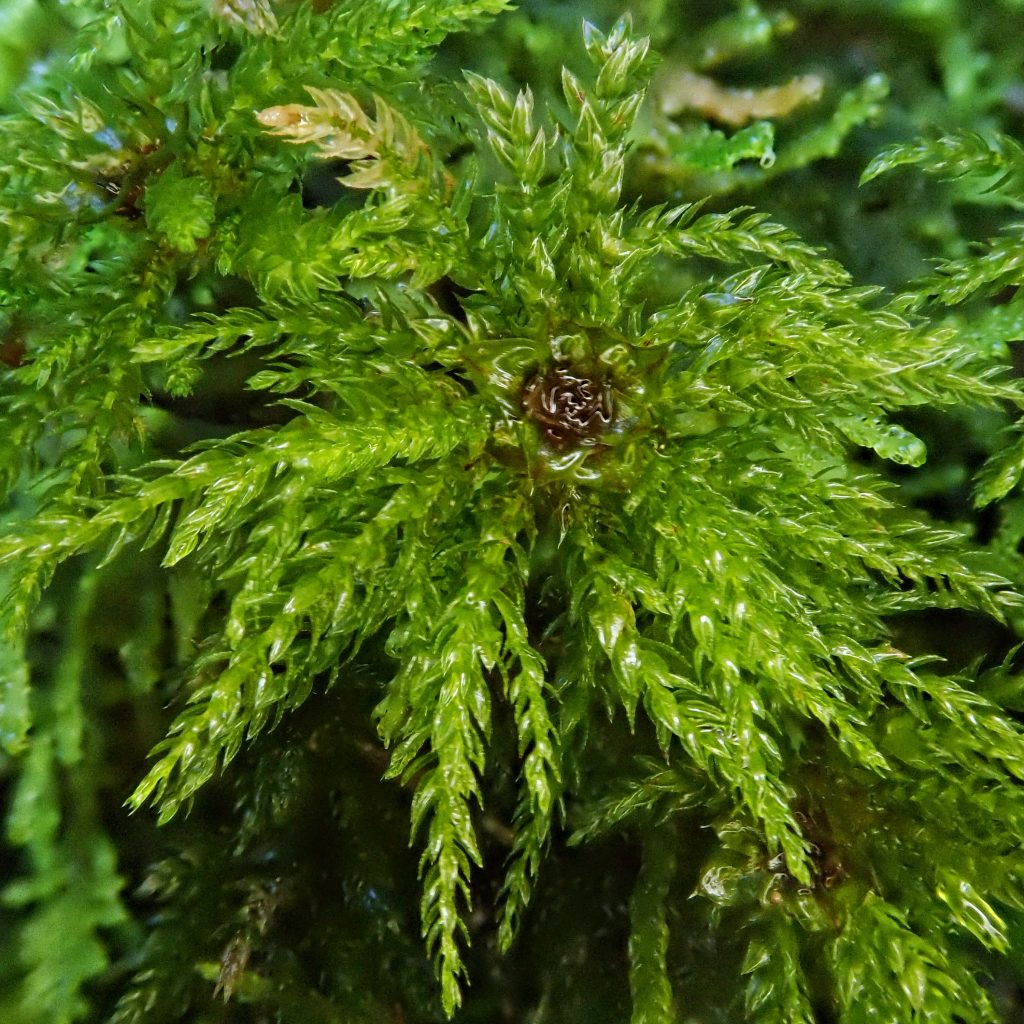
Reproductive timing– capsules mature in spring-summer
Eaten by– Saanich people made a yellowish dye from this plant
Etymology of names– Leuco- is from the Greek for ‘white’, and –lepis is Greek for ‘scale’, which references the tiny, white, scale-like stem leaves. The epithet acanthoneura means ‘thorn/spine and cord/sinew, and may reference something to do with the costa, or with the acute point on the leaf apex, but so far I cannot ascertain exactly what.
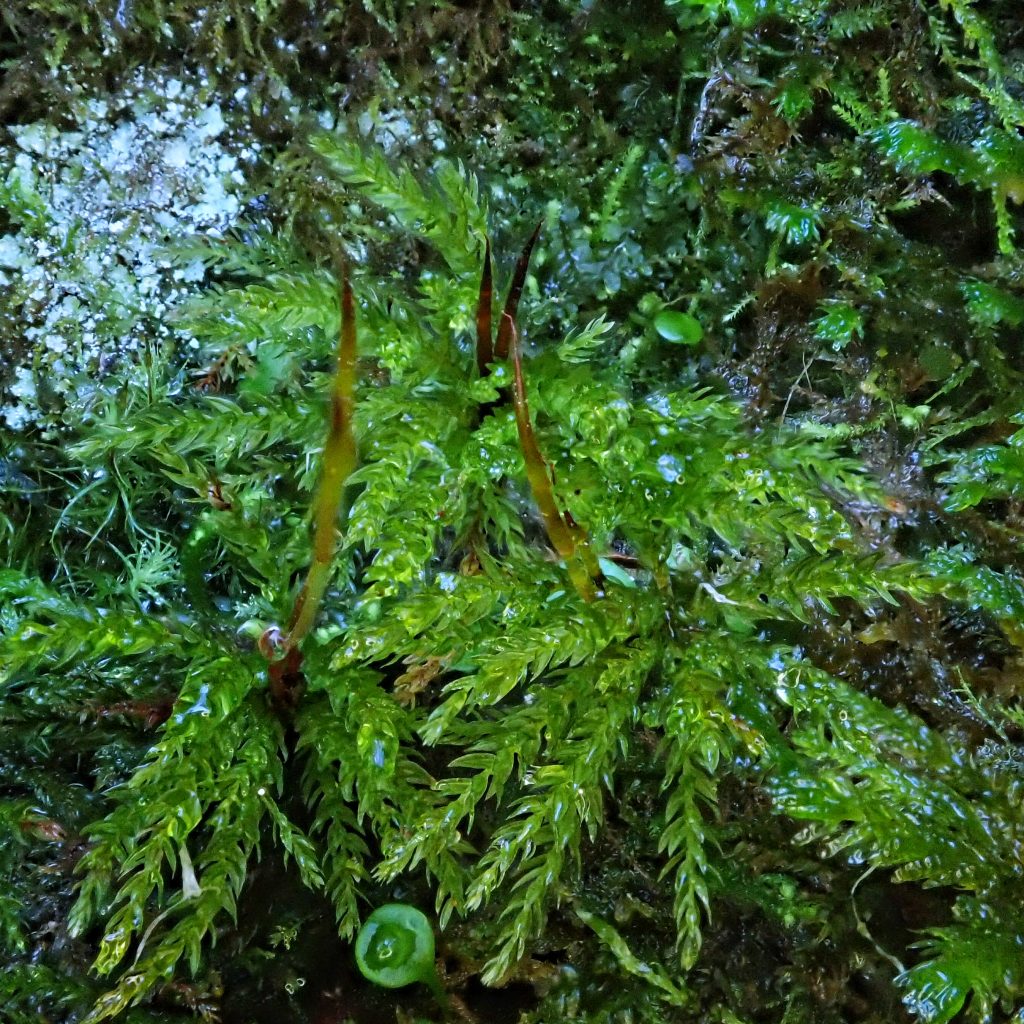
http://www.efloras.org/florataxon.aspx?flora_id=1&taxon_id=250099212
https://sjgmoss.wordpress.com/2017/02/24/leucolepis-acanthoneuron-%E2%80%A2-menziess-tree-moss/amp/
https://www.centralcoastbiodiversity.org/menzies-tree-moss-bull-leucolepis-acanthoneuron.html
http://linnet.geog.ubc.ca/Atlas/Atlas.aspx?sciname=Leucolepis%20acanthoneuron
https://en.m.wikipedia.org/wiki/Leucolepis_acanthoneura
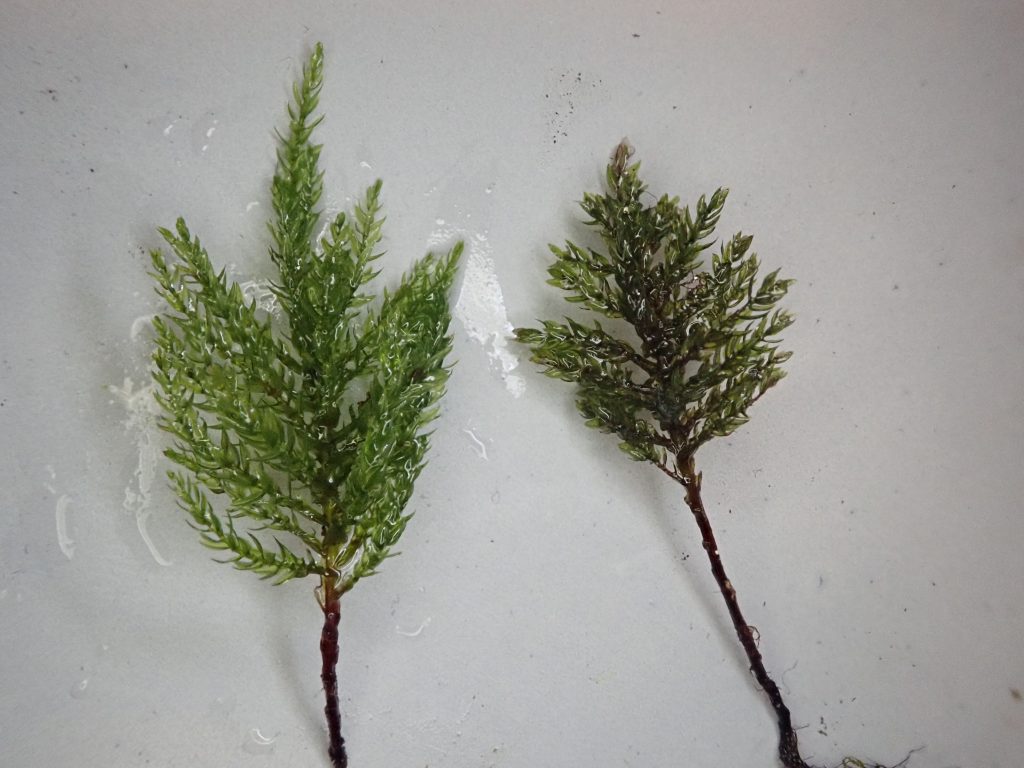
It does look palm tree-like! ☺️